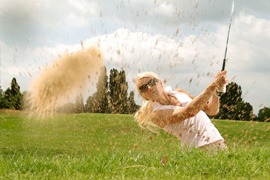An article entitled “The Wilt that Wasn’t” was published in GCI that attempted to provide insight into the tumultuous world of plant pathology and the academic quarrels that are often encountered n scientific research. That particular article touched on “bacterial wilt” of creeping bentgrass, initially hypothesized to be caused by the bacterium Acidovorax avenae; an issue that has been at the forefront of superintendent’s minds for the last few years. At the time of publication, very little research pertaining to Acidovorax in creeping bentgrass had been published. Additionally, necdotal accounts from various regions around the country made for a non-cohesive, convoluted summary that was confusing. This article is intended to shed a bit of light, rather than heat, on the subject of bacterial etiolation and decline of creeping bentgrass by providing some historical context, and more importantly, empirical evidence of the current and ongoing research with this emerging disease. In he 1980’s, a new disease was identified that changed the way we think about turfgrass pathogens. The disease was bacterial wilt of ‘Toronto’ creeping bentgrass, caused by a Xanthomonas bacterium. This as important, as it was the first major bacterial disease of amenity turfgrass, and for several years a good deal of controversy surrounded this new disease and its cause. Since then, a few researchers have dedicated much time and effort characterizing that and another closely related Xanthomonas pathogen of annual bluegrass. Today, the vegetative cultivars of creeping bentgrass such as oronto, and the diseases that affect them are largely a thing of the past; however, bacterial wilt on annual bluegrass greens, tees and fairways is still a common problem every year, all around the country. One distinct characteristic of the disease on annual bluegrass is the yellowing and overgrowth or etiolation (Ee-tee-ohlay- shun) that is often observed during cooler weather conditions.
Click here to view the Full Article.

